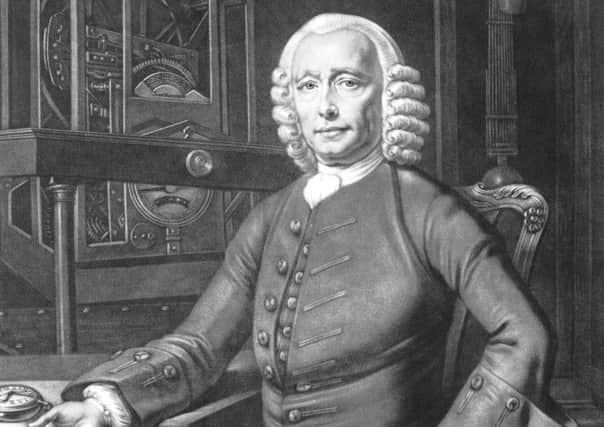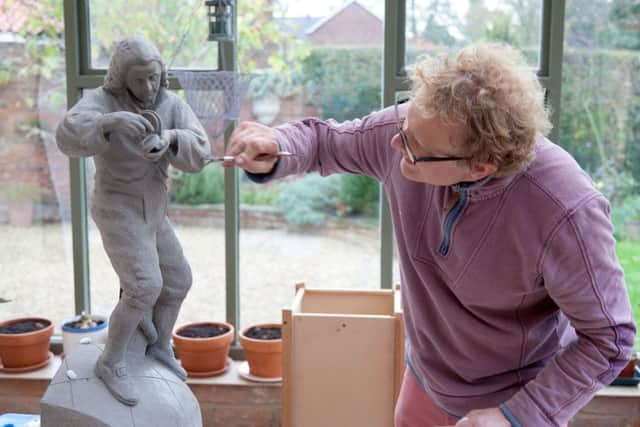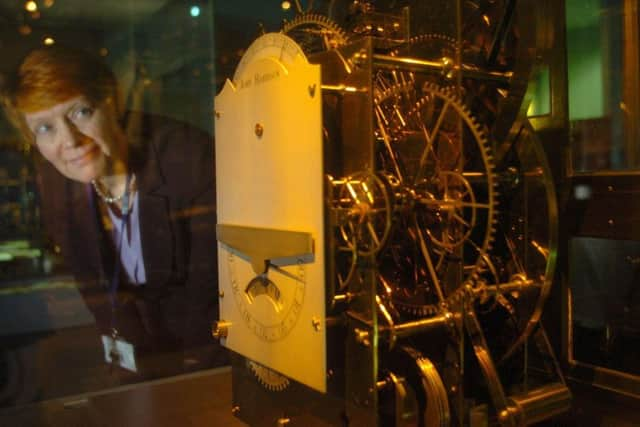John Harrison changed the world, so why isn't there a statue of the Yorkshire genius?


A couple of years ago a group of horologists, whose niche expertise is the art of measuring time, gathered in a room in the basement of the Royal Observatory in Greenwich. They were there as witnesses to a moment in history and to see officials from the Guinness Book of World Records confirm what they had long suspected – that a timepiece designed by John Harrison was the most accurate of its kind.
To be specific, as horologists like to be, it was “the most accurate mechanical clock with a pendulum swinging in free air” and was further proof of the genius of the man born the son of a Wakefield carpenter in 1693.
Advertisement
Hide AdAdvertisement
Hide AdHarrison, who spent much of his life in Barrow upon Humber, grew up to be more than just a clockmaker. In 1714 he was among those who attempted to answer a challenge resulting from the Longitude Act which offered a £20,000 prize (worth £3m today) to anyone who could come up with a way of ships fixing their position east or west.


Some of the country’s greatest minds put forward theories, including observing Jupiter’s moons and measuring the angle between the moon and sun, but most were found wanting. Harrison, however, was triumphant.
His maritime chronometer, which calculated longitude by comparing the time at home port with the position of the sun and stars during the journey, was revolutionary. It ticked along happily and accurately kept good time despite rough seas and temperature changes.
In so doing, he helped save countless of lives, but unlike other great minds of the 18th and 19th centuries Harrison has been curiously overlooked.
Advertisement
Hide AdAdvertisement
Hide AdThere’s a statue of George Stephenson, Father of the Railways, in Newcastle; steam pioneer James Watt sits on a London square and there are half a dozen of Isambard Kingdom Brunel. However, even in Yorkshire which has public tributes to everyone from Captain Cook to Freddie Trueman, Harrison doesn’t get a look in. It’s an oversight that a group of Harrison aficionados hope to address.


“The story of John Harrison, who was born into a relatively humble family, is truly remarkable,” says Trevor Millum, chair of the Better Barrow community project, which is behind moves to fund a statue. “Solving the problem of how to calculate longitude at sea was a key moment in maritime history. It opened up the globe to trade and exploration, but even at the time Harrison didn’t really get the recognition he deserved.
“Famously the Government were slow to pay him what he was owed for winning the prize and other rivals emerged with pet projects and agendas.
“He was eventually paid most of the money near the end of his life after the intervention of King George III, with little other recognition of the scale of his achievement. There are no other statues as far as we know so this will be a first for Barrow and the world.”
Advertisement
Hide AdAdvertisement
Hide AdCaptain Cook used a copy of Harrison’s clock on his voyages and another latter day explorer, Neil Armstrong, the first man on the moon, declared him one of his heroes.


In more recent years, there was a brief flurry of interest following the 1998 publication of Dava Sobel’s bestselling book Longitude, which was made into a television film starring Michael Gambon as Harrison and Jeremy Irons as retired naval officer Rupert Gould, who in the early 20th century restored Harrison’s four chronometers. Irons, Sobel and Astronomer Royal Lord Martin Rees are among the high-profile figures that are now backing Better Barrow’s plans to celebrate one of England’s greatest inventors.
“We have already commissioned the acclaimed artist Marcus Cornish, whose previous work includes the Paddington Bear sculpture in the eponymous London railway station,” adds Millum. “The life-sized bronze statue will depict Harrison winding up his clock, whilst stood on a section of the globe and we are determined to make this long-held dream finally become a reality.”
The appeal, which is offering people three levels of support, from £50 to £1,000, has already raised £30,000 of the £70,000 project costs. Other backers are now being sought from across the world to ensure the clockmaker’s legacy is not forgotten.
Advertisement
Hide AdAdvertisement
Hide AdHarrison died on his 83rd birthday and was buried in the graveyard of St John’s Church in Hampstead, north London.


A memorial tablet was unveiled in Westminster Abbey in 2006 and three years ago Northern Rail renamed its service which runs between Barton and Cleethorpes the John ‘Longitude’ Harrison. The statue would be the final step in giving the man who solved a problem no one else could his rightful place in the history books.
As Lord Rees said, acknowledging the debt we owe Harrison, “Through his astonishing talent and lifelong persistence against the odds, John Harrison hugely benefited the nation and the world. He is a local hero who surely deserves this memorial.”
To find out more about the project or to make a donation visit betterbarrow.org/donate